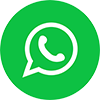Software Copyright in India and the Best Method to Enforce it
Overview : Literary work is something that is intended to afford their information all instruction in the form of literary enjoyment. Literary work includes but not limited to textbooks, poems, magazines catalog, lyrics of a song, etc. Section 2(O) of the Copyright Act provides that literary work includes computer program table and compilation including computer databases.
It further defines the word computer program under section 2(ffc)” as a set of instructions expressed in words, codes streams or in any other form including a machine-readable medium, capable of causing a computer to perform a particular task or achieve a particular result.” Computer Software or program can be registered as a ‘literary work’. Further, the Act gives protection to the tables and compilation which includes the computer databases. A computer database is a compilation of work and falls under the category of literary work protected under copyright if it exhibits some creativity for originality in the selection and the arrangement of the database.
The act protects only those computer programs which are original and are not a copy of others.
Computer programs are in the form of codes. When computer programs are executed on a computer processor it results in computer software. The code can be written for an operating system or a machine-level code. The copyright act protects the computer program computer software and computer database only to the extent of their representation but does not protect its functionality element or technical part in it. The various parts of the computer software which can be copyrighted is as under:
Graphical user interface (GUI)
It is a computer program through which the user communicates or interacts with the applications of computer mobile devices and likes through the use of symbol pointing devices such as Windows icons menus used by most modern operating systems. GUI is an element of a program through which users can interact with various other features of a computer program. The GUI has primarily dynamic content and is designed for user interaction. It may be used directly or indirectly in a computer for handheld electronic devices. the overall look and feel of a GUI can be protected under the copyright as a literary work.
Computer program/ software code
Computer program/ software code is a literary work as provided under section 2(O) of the Copyright Act 1957.computer program for a software code in simple terms means a definite set of instructions that enable a computer or handheld device to carry out a specific task. It includes source code and object code. In order to get a work registered under a software category, the applicant has to submit the source code and the object code of the computer program as provided under the Copyright rule 2013. The source code is an instruction written by the computer programmer at the time of developing that program. It is normally written in binary language and may include words, numbers, letters symbols used by the computer programmer. Whereas the object code is the output generated when the source code is compiled with the C compiler. Object code contains a sequence of machine-readable instructions to be processed by the computer. The source code is readable by human beings whereas the object code is read by the machine. further, the object code is the output of source code when processed with the C compiler.
Operating System
An operating system is that kind of software which provides the base on which other software could be run, the latter is known as applications.
When a customer purchased pre-installed software from a computer provider then that operating system package license is called an original equipment manufacturer (OEM) license. This license is specific to a particular machine on which it is installed by the computer provider or authorized distributor. this type of licensed version of the software cannot be installed on any other Machines by a third person and if it is being installed it would be an infringement of copyright in the operating system. In the case of operating systems, the software code could be protected under the copyright as a literary work under the software category, not in the category accompanied by the source code and object code.
Application Software
All the application software are literary works and are capable of registration under the software category. It is important to mention here that the registration of the application software will cover any screen display generated by that program provided the creator of the object code and the source code generating that screen display submits the same person at the time of seeking registration. The owner of the computer program and that of the screen displays should be the same.
Further, snapshots or screenshots of application software are not eligible for copyright protection.
Related rights in terms of computer software
The owner of a computer program has all the rights associated with it. The computer program owner has all the right applicable to a literary work and in addition to it, a computer programmer enjoys the right to sell or give on hire or offer for sale or hire irrespective of the fact that such a copy has been previously sold or given on hire. However, the right to rental is not allowed for a computer program code which is not configured as a substantial part of the object to be rented.
More specifically, a program that is written to integrate various elements of a multimedia product will be protected as a computer program provided both the object code and the source code is being submitted with the copyright office for registration of it as a literary work.
Developers or creators of a multimedia product should obtain the prior permission of the owner to use the pre-existing text poetry or computer program which is to be incorporated in a multimedia product. Where multimedia products are being created without proper authorization of the copyright owner, the same amounts to infringement of the copyright and will not be entitled to copyright protection.
It has been settled through various judicial pronouncements that incorporeal right to the software is the copyright that remains with the originator. What is being sold is a copy of the software and when one buys a copy of the software which is considered on the same footing as one is buying a copy of a novel from Book Store for a videotape or music cassette from its Store. The buyer of the software is not the owner of the computer software.
Intellectual property rights in computer software are recognized and protected by the Copyright Act and as per the provisions of Section. 14(b) of the said statute, the use of computer software under a license is not an exercise of a copyright, it has been contended that the acquisition of computer software under license at the most could be considered as a purchase of a copyrighted article wherein no copyright right is transferred as per the Copyright Act.
It has been held by Amway India Enterprises and Ors. vs. The Deputy Commissioner of Income Tax and Ors. that the software is not merely knowledge, but rather is knowledge recorded in a physical form having physical existence, taking up space on a tape, disc or hard drive, making physical things happen and can be perceived by the senses. It has been held that the purchaser does not receive mere knowledge but receives an arrangement of matter which makes his or her computer perform the desired function. It has been held that this arrangement of matter recorded on a tangible medium constitutes a corporeal body. It is held that the incorporeal right to software is the copyright that remains with the originator.
Author Bio

Editorial Team | in
Setindiabiz Editorial Team is a multidisciplinary collective of Chartered Accountants, Company Secretaries, and Advocates offering authoritative insights on India’s regulatory and business landscape. With decades of experience in compliance, taxation, and advisory, they empower entrepreneurs and enterprises to make informed decisions.
